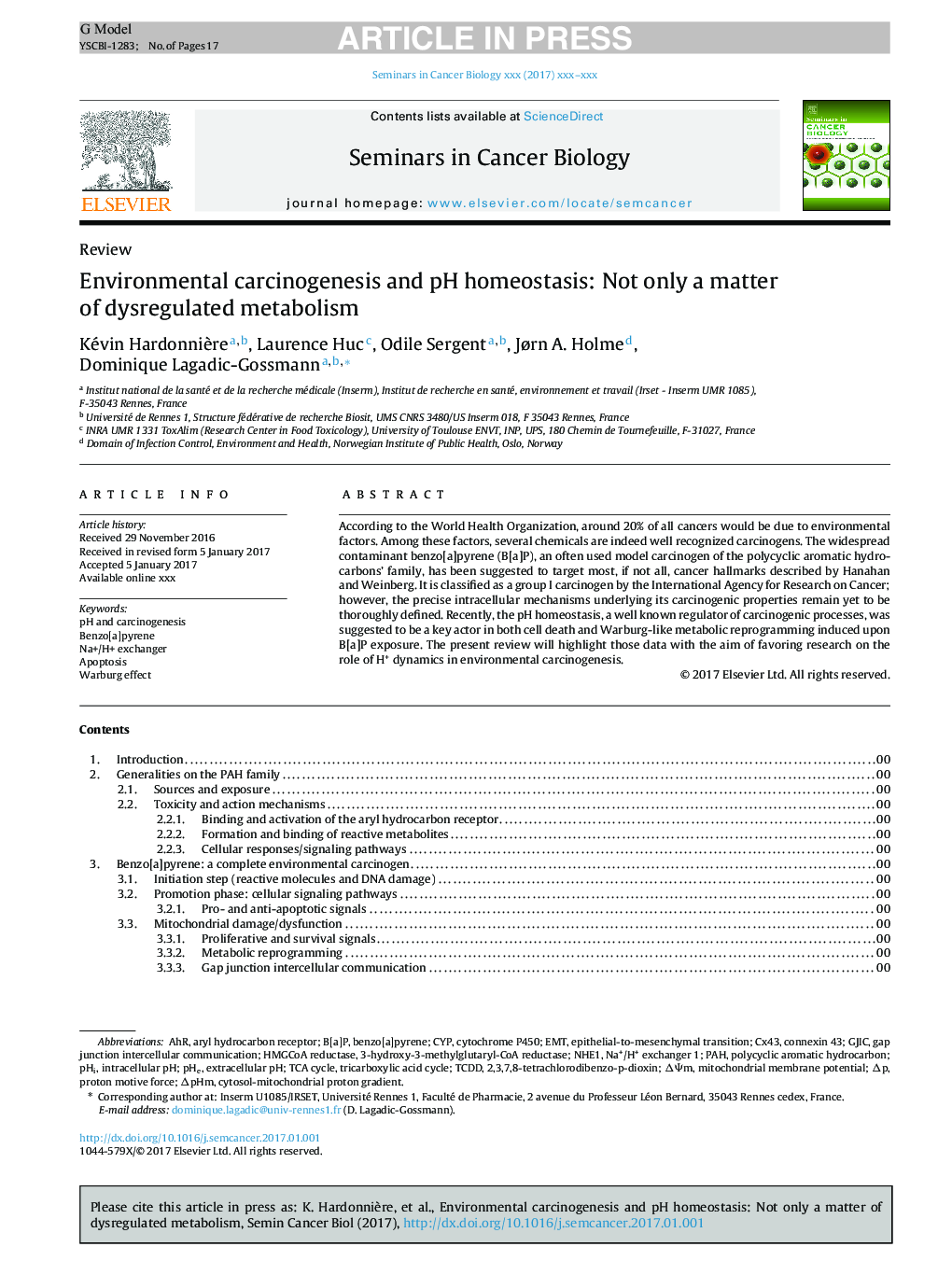| Article ID | Journal | Published Year | Pages | File Type |
|---|---|---|---|---|
| 8361933 | Seminars in Cancer Biology | 2017 | 17 Pages |
Abstract
According to the World Health Organization, around 20% of all cancers would be due to environmental factors. Among these factors, several chemicals are indeed well recognized carcinogens. The widespread contaminant benzo[a]pyrene (B[a]P), an often used model carcinogen of the polycyclic aromatic hydrocarbons' family, has been suggested to target most, if not all, cancer hallmarks described by Hanahan and Weinberg. It is classified as a group I carcinogen by the International Agency for Research on Cancer; however, the precise intracellular mechanisms underlying its carcinogenic properties remain yet to be thoroughly defined. Recently, the pH homeostasis, a well known regulator of carcinogenic processes, was suggested to be a key actor in both cell death and Warburg-like metabolic reprogramming induced upon B[a]P exposure. The present review will highlight those data with the aim of favoring research on the role of H+ dynamics in environmental carcinogenesis.
Keywords
ΔΨmGJICAHRPHIδpPAHCyPCX43NHE1TCDDPHE2,3,7,8-Tetrachlorodibenzo-p-dioxin3-hydroxy-3-methylglutaryl-CoA reductaseB[a]PHMGCoA reductaseNa+/H+ exchangerNa+/H+ exchanger 1Extracellular pHIntracellular pHWarburg effectGap junction intercellular communicationBenzo[a]pyreneEMTApoptosisCytochrome P450proton motive forcePolycyclic aromatic hydrocarbonMitochondrial membrane potentialTCA cycletricarboxylic acid cycleconnexin 43epithelial-to-mesenchymal transitionaryl hydrocarbon receptor
Related Topics
Life Sciences
Biochemistry, Genetics and Molecular Biology
Biochemistry
Authors
Kévin Hardonnière, Laurence Huc, Odile Sergent, Jørn A. Holme, Dominique Lagadic-Gossmann,
